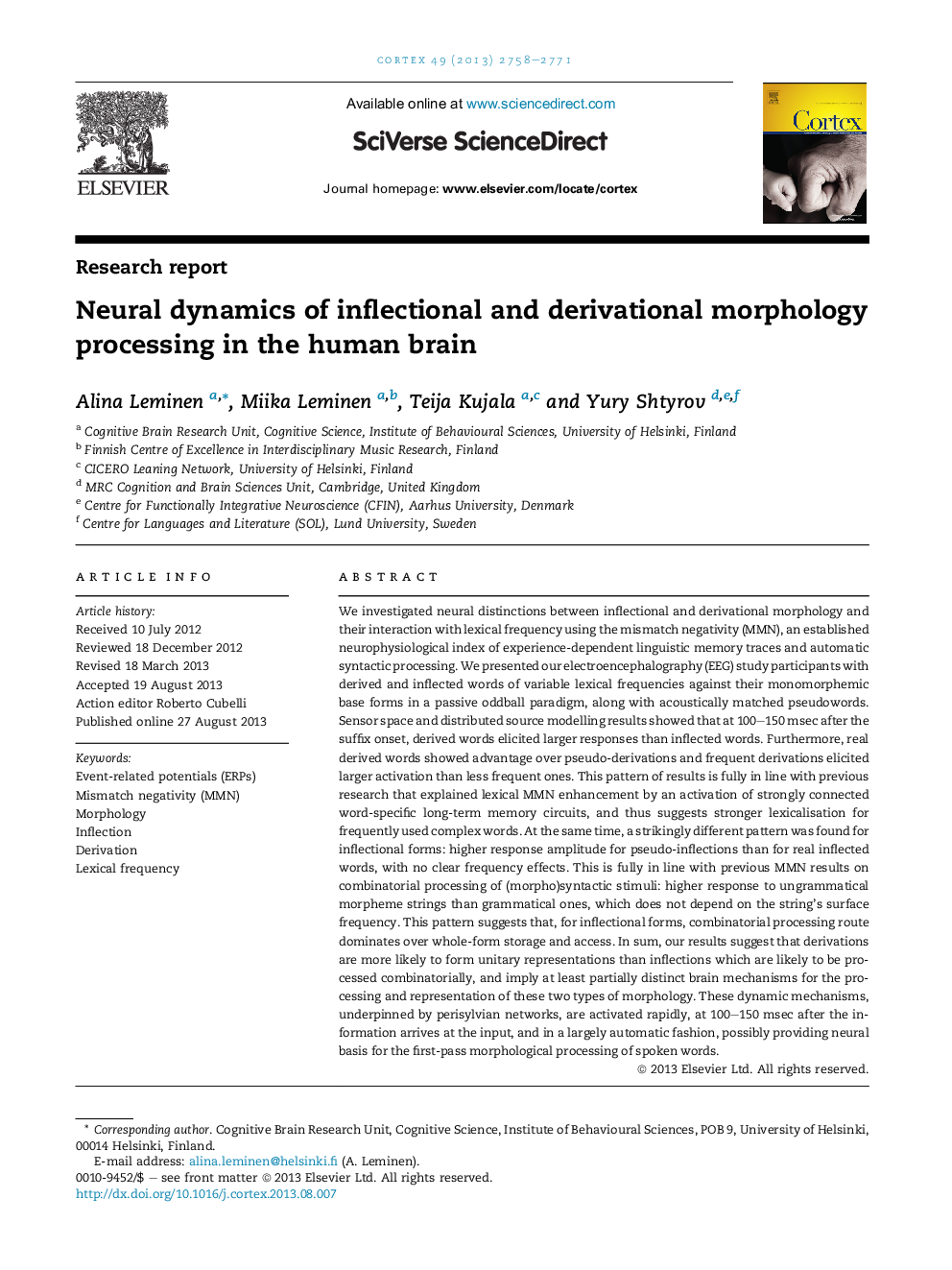| کد مقاله | کد نشریه | سال انتشار | مقاله انگلیسی | نسخه تمام متن |
|---|---|---|---|---|
| 10463147 | 925105 | 2013 | 14 صفحه PDF | دانلود رایگان |
عنوان انگلیسی مقاله ISI
Neural dynamics of inflectional and derivational morphology processing in the human brain
ترجمه فارسی عنوان
دینامیک عصبی پردازش مورفولوژی فراطبیعی و مشتق شده در مغز انسان
دانلود مقاله + سفارش ترجمه
دانلود مقاله ISI انگلیسی
رایگان برای ایرانیان
کلمات کلیدی
موضوعات مرتبط
علوم زیستی و بیوفناوری
علم عصب شناسی
علوم اعصاب رفتاری
چکیده انگلیسی
We investigated neural distinctions between inflectional and derivational morphology and their interaction with lexical frequency using the mismatch negativity (MMN), an established neurophysiological index of experience-dependent linguistic memory traces and automatic syntactic processing. We presented our electroencephalography (EEG) study participants with derived and inflected words of variable lexical frequencies against their monomorphemic base forms in a passive oddball paradigm, along with acoustically matched pseudowords. Sensor space and distributed source modelling results showed that at 100-150Â msec after the suffix onset, derived words elicited larger responses than inflected words. Furthermore, real derived words showed advantage over pseudo-derivations and frequent derivations elicited larger activation than less frequent ones. This pattern of results is fully in line with previous research that explained lexical MMN enhancement by an activation of strongly connected word-specific long-term memory circuits, and thus suggests stronger lexicalisation for frequently used complex words. At the same time, a strikingly different pattern was found for inflectional forms: higher response amplitude for pseudo-inflections than for real inflected words, with no clear frequency effects. This is fully in line with previous MMN results on combinatorial processing of (morpho)syntactic stimuli: higher response to ungrammatical morpheme strings than grammatical ones, which does not depend on the string's surface frequency. This pattern suggests that, for inflectional forms, combinatorial processing route dominates over whole-form storage and access. In sum, our results suggest that derivations are more likely to form unitary representations than inflections which are likely to be processed combinatorially, and imply at least partially distinct brain mechanisms for the processing and representation of these two types of morphology. These dynamic mechanisms, underpinned by perisylvian networks, are activated rapidly, at 100-150Â msec after the information arrives at the input, and in a largely automatic fashion, possibly providing neural basis for the first-pass morphological processing of spoken words.
ناشر
Database: Elsevier - ScienceDirect (ساینس دایرکت)
Journal: Cortex - Volume 49, Issue 10, NovemberâDecember 2013, Pages 2758-2771
Journal: Cortex - Volume 49, Issue 10, NovemberâDecember 2013, Pages 2758-2771
نویسندگان
Alina Leminen, Miika Leminen, Teija Kujala, Yury Shtyrov,
